You have probably all heard the name Yongnuo: a Chinese maker of photo equipment that is not only very affordable, but also good. Flashes that compete with those made by Nikon and Canon, but also other equipment, like lenses.
And like the Yongnuo Extender EF 2x III (i.e. the Canon version of a 2x lens extender) that I just bought for around US$190—compared with the Canon version, which today costs $525 at B&H. A huge price delta, so is there a quality difference too? Read on to find out.
A lens extender is a device that is mounted in between the camera and the lens, and by being there, makes telephoto lenses longer. So with this 2x extender, my 70-200 mm f/2.8 lens becomes a 140-400mm lens. When I use this lens/extender combination on my crop camera, the Canon 7D, I get an effective (and astonishing) 640mm!
Effective 640mm
An extender is an active device: unlike extension rings, which simply make the distance between lens and camera greater in order to achieve macro functionality, an extender has lenses inside (9 lenses in this case, in 5 groups), so quality is important: cheap glass will cause quality to deteriorate quickly.
Upon visual inspection, this extender comes across as a quality device. A carrying pouch is provided, and the extender itself is good: the mounts are metal, lenses are coated, and workmanship is excellent.
Here’s the lens side. As you see, an element sticks out, which is why you can only use this extender on certain, mainly long, lenses:
And here’s the camera side:
So by using this extender between my camera and my telephoto lens, I get a longer telephoto lens. Great stuff! But is it a free lunch?
Of course not: free lunches do not exist. When considering an extender, keep in mind the three possible drawback areas:
- First, there are the theoretical drawbacks. There is no way of overcoming these. The main price you pay for the extra focal length is a decrease in maximum aperture. A 2x extender will cost you 2 stops of aperture. My f/2.8 lens now becomes an f/5.6 lens.
- Then, there could be functionality drawbacks. An extender will only work on certain lenses, namely the longer lenses. You need to check the list of lenses that will work with the extender: see below. Also, some lenses will lose functionality, such as metering or autofocus functionality. I am fortunate: the 70-200 f/2.8 IS lens works great with this extender: autofocus works, as does metering (but more about this later). This extender works with my 45mm T/S lens as well, but I am doubtful as to whether that is actually useful in real life.
- Finally, there may be quality drawbacks. Cheap glass, for instance, will destroy the quality of your picture. The Yongnuo scores very well here.
Lenses you can use with this extender:
I used the Yongnuo 2x extender for Canon on my 1Dx and on my 5D cameras. And the results, I must say, are excellent. I saw none of the loss of quality that I would expect in the corners. No doubt it is there—after all, no piece of glass inserted between you and the object you are looking at will improve the picture—but if it is imperceptible, that’s an amazing feat. For less than half the price of the Canon version that it imitates.
With any lens, you expect vignetting, i.e. a little darkening in the corners. In this extender, I see very little. And you can fix it in post-production. First, the original; second, the version I fixed in Lightroom:
Can you see that the first one has a tiny bit of vignetting?
Talking about distortion, do not use the “Enable Profile Corrections” feature in the Lens Corrections section in Adobe Lightroom. If you do, you will see significant extra distortion, instead of a lessening.
Chromatic aberration was minimal, and the “Remove Chromatic Aberration” function in Lightroom’s Lens Corrections panel took care of it completely.
Autofocus appears to work just fine. I saw no discernible decrease in AF speed or accuracy.
Extender in action: a 400mm shot
Metering seems two stops off. In testing, I needed to set the meter to somewhere between –1 and –2 stops to get a correctly exposed photo. This was the case whether I used spot metering or evaluative metering. I used the centre spot, in case metering is biased to the selected focus spot. If this is indeed systematic rather than me doing something wrong, I do not care: it is easy enough to aim at –2 instead of 0.
Conclusion
The Yongnuo is an excellent clone of the Canon extender. While perhaps there are quality differences, they are so small that I was unable to detect them. And for one third of the Canon extender, this is a very good deal. It is this price that may get many of ytou rushing to the store to get one.
In that case I have a tip for you: you will get a special price if you mention discount code “Speedlighter” to Tim Payne at Yongnuo USA: http://yongnuousa.net/contact. And please note that I have not been compensated in any way for this mention or this review: I paid for my own extender.

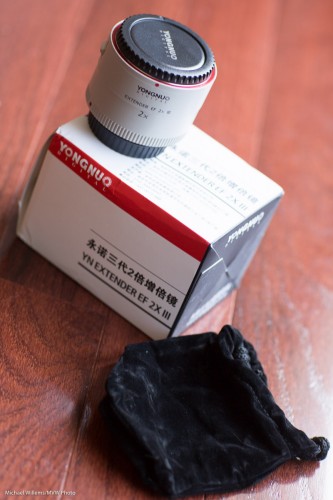
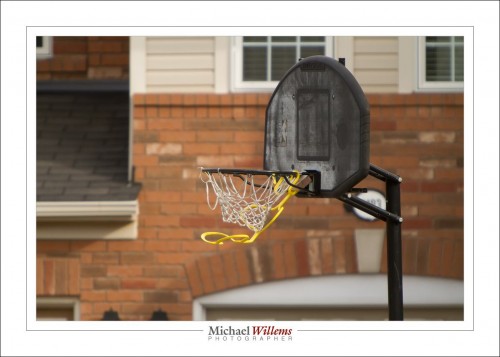
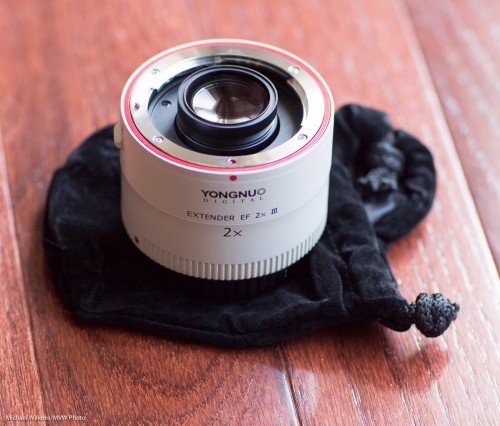
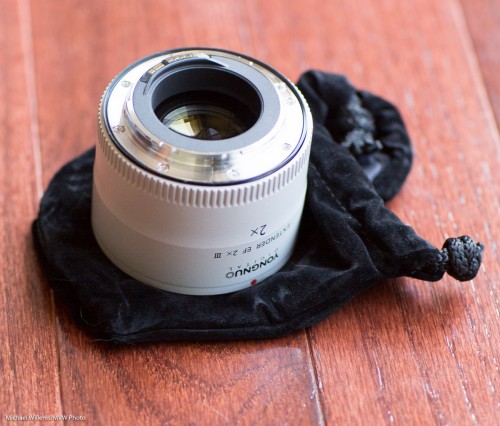
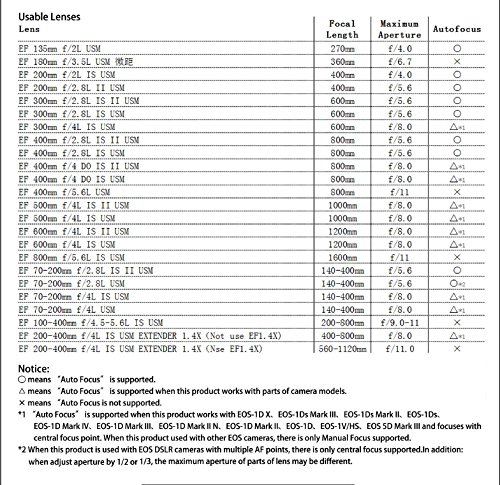
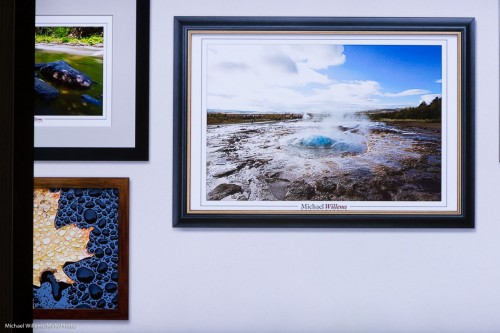
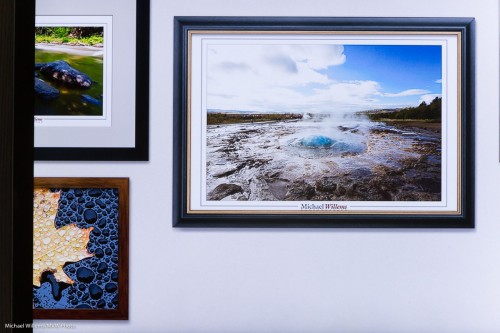
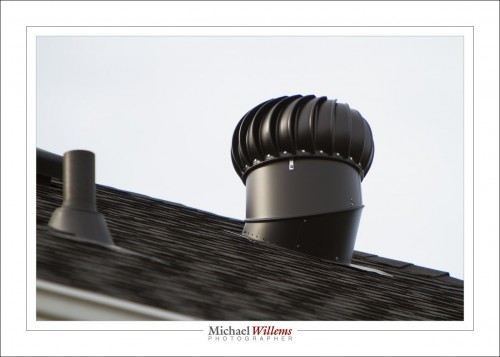
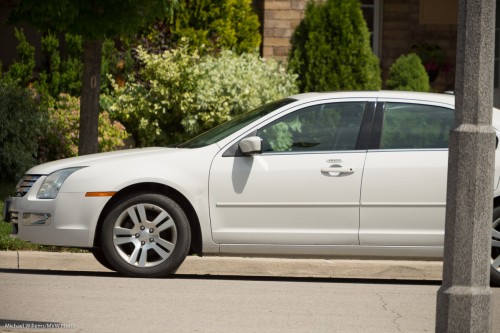
WHAT OTHER BRANDED LENSES WORK WITH THIS EXTENDER SAY IN TAMRON,SIGMA, SAMYANG ARE OTHER MANUFACTURERS I SEE NO CHART FOR THIS QUESTION.
Good question; and in fact even “what Canon lenses will work with an extender” is a good question. I am not sure, is the answer. Google may well help.
Thanks for the review. I am definitely going to pick up one of these Yongnuo 2x extenders for Canon. At this price point, I think it is time for Canon to step up and rethink their pricing model. With how good this Yongnuo equipment is becoming, Canon isn’t going to be able to keep milking their customers and keep their business going. I already own three of the Yongnuo speedlites, and I have to say that they seem to be even better than the Canon equipment they mimic.
Agreed, Yongnuo rocks.